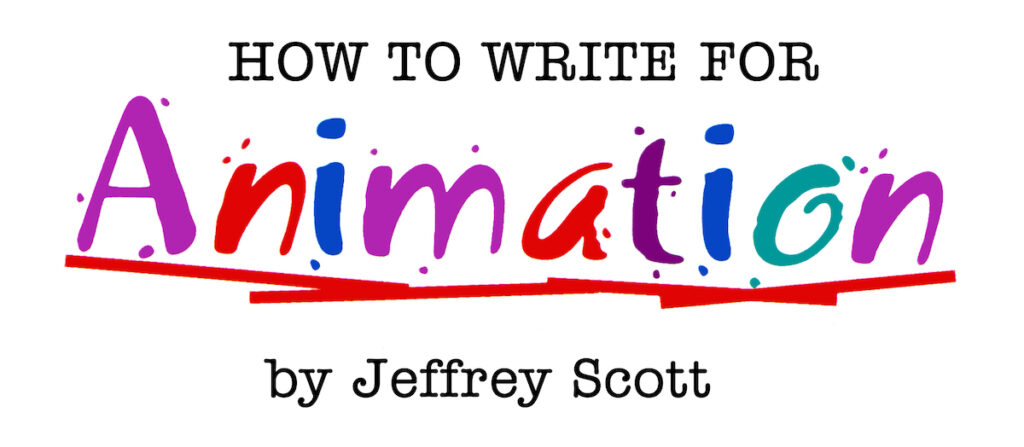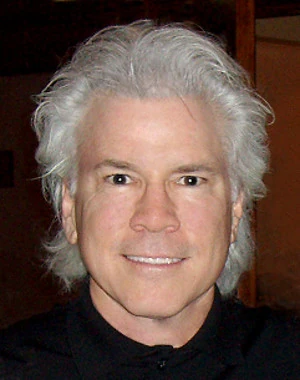
If you want to write animation—or if you want to produce or direct it—it’s important to know the difference between live-action and animation writing.
Animated stories are developed pretty much the same as live-action. You come up with a concept, sometimes called a premise, describing the basic beginning, middle and end of the story. The next step is an outline, laying out each scene, including action and gags. The final step is the script, with full scene description and dialogue. The script form in animation is virtually identical to live action.
It’s the differences that are important to understand. In a word, animation is a much more visual medium than live action. Most live-action scripts require minimal description of what’s taking place on the screen. A car chase can simply be described as “a car chase”. And it’s up to the director to interpret it. But that’s not always the case in animation where the visuals are very often something we don’t see in real life, so they cannot be described in a few words. Let me give you an example. What do you see when I write this:
A coyote chases a roadrunner over a cliff and falls into a canyon.
That’s how you might describe a scene in a live-action script. The director takes it from there and interprets it as he sees it. Now what do you see when I write this:
The coyote scrambles after the roadrunner, his legs a blur, running right off the end of the cliff. As the hovering roadrunner sticks his tongue out and beeps at him, the coyote stands over thin air. He looks down at the canyon bottom a mile below, starting to sweat. Then he looks into camera with a loud “gulp!” and drops like a rock, his neck stretching like a rubber band as his head tries to catch up. He diminishes into the distance with a bomb whistle, finally hitting the canyon floor with a dull thud and distant puff of smoke.
Get the picture? It’s eight times as many words, but it gives you a complete visual image with little need for interpretation.
Thus, animation requires more description to effectively communicate the visual. So the major difference between an animated and live-action script is that an animation script usually contains more detailed scene description. The animation writer must describe the action as precisely as necessary to get whatever’s in his head onto the screen. This is especially necessary when scripts are sent overseas to be animated because if the description is imprecise, the translation to other languages and cultures leaves a lot of room for misinterpretation. Bottom line: If the animation writer doesn’t describe it precisely the chances are it won’t appear on the screen, at least not the way he imagined it.
So to a great extent, the animation writer functions as a director. Case in point: I developed an animated action series for Stan Lee’s POW! Entertainment and was tasked with writing a short presentation trailer for MIP. I received the following email from the executive producer stating who is responsible for directing the trailer:
I want us to see camera angles that show expression on the faces. I want to see a direction that has all this amazing stuff that you will see in it. Of course, we need our story, which has a touch of humour as well but mixed with amazing cinematic production. I am copying Jeff to see how he can plus the trailer script to bring the direction forth, the pathos, the emotion…all that stuff. And please don’t punt and say it’s the storyboard artists…it’s not…it’s the writer’s job to set the tone of what he sees in this vision.
In live-action, it’s the director’s job to set the tone of his vision. But this is not always so in TV animation. It may seem like a burden to the animation writer to have more responsibility and need to write a more detailed description, but the plus side is that the TV animation writer eventually learns to not only visualise, but humorise and emotionalise a story, right down to its cutting and character direction. He may even gain enough skill in the process to make the leap from writing to directing.
©Jeffrey Scott, All Rights Reserved
(Jeffrey Scott has written over 700 animated and live-action TV and film scripts for Sony, Warner Bros., Disney, Marvel, Universal, Paramount, Columbia, Big Animation, Hanna-Barbera and others. His writing has been honored with three Emmys and the Humanitas Prize. He is the author of the acclaimed book, How to Write for Animation. To work with Jeffrey visit his website at www.JeffreyScott.tv.)

